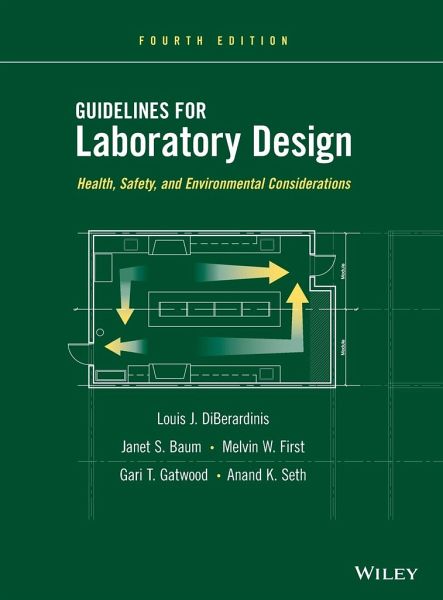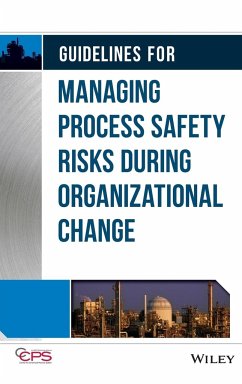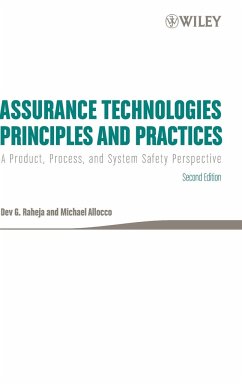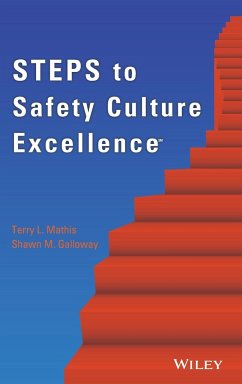
Laboratory Design 4e
Versandkostenfrei!
Versandfertig in über 4 Wochen
153,99 €
inkl. MwSt.
Weitere Ausgaben:

PAYBACK Punkte
77 °P sammeln!
The new edition of this book addresses the many changes in laboratory design since the previous edition was published in 2001. It focuses on advances in environmental design and green laboratories while bringing up to date all health and safety aspects of lab design. Features include a new section on sustainable design, new chapters on material sciences engineering and nanotechnology, plus major updates in the Animal Research and HVAC chapters. Architects, design and HVAC engineers, industrial hygienists, EHS professionals, and facilities managers will gain an important ally for their work.
Proven and tested guidelines for designing ideal labs for scientific investigations
Now in its Fourth Edition, Guidelines for Laboratory Design continues to enable readers to design labs that make it possible to conduct scientific investigations in a safe and healthy environment. The book brings together all the professionals who are critical to a successful lab design, discussing the roles of architects, engineers, health and safety professionals, and laboratory researchers. It provides the design team with the information needed to ask the right questions and then determine the best design, while complying with current regulations and best practices.
Guidelines for Laboratory Design features concise, straightforward advice organized in an easy-to-use format that facilitates the design of safe, efficient laboratories. Divided into five sections, the book records some of the most important discoveries and achievements in:
Part IA, Common Elements of Laboratory Design, sets forth technical specifications that apply to most laboratory buildings and modules
Part IB, Common Elements of Renovations, offers general design principles for the renovation and modernization of existing labs
Part II, Design Guidelines for a Number of Commonly Used Laboratories, explains specifications, best practices, and guidelines for nineteen types of laboratories, with three new chapters covering nanotechnology, engineering, and autopsy labs
Part III, Laboratory Support Services, addresses design issues for imaging facilities, support shops, hazardous waste facilities, and laboratory storerooms
Part IV, HVAC Systems, explains how to heat, cool, and ventilate labs with an eye towards energy conservation
Part V, Administrative Procedures, deals with bidding procedures, final acceptance inspections, and sustainability
The final part of the book features five appendices filled with commonly needed data and reference materials.
This Fourth Edition is indispensable for all laboratory design teams, whether constructing a new laboratory or renovating an old facility to meet new objectives.
Now in its Fourth Edition, Guidelines for Laboratory Design continues to enable readers to design labs that make it possible to conduct scientific investigations in a safe and healthy environment. The book brings together all the professionals who are critical to a successful lab design, discussing the roles of architects, engineers, health and safety professionals, and laboratory researchers. It provides the design team with the information needed to ask the right questions and then determine the best design, while complying with current regulations and best practices.
Guidelines for Laboratory Design features concise, straightforward advice organized in an easy-to-use format that facilitates the design of safe, efficient laboratories. Divided into five sections, the book records some of the most important discoveries and achievements in:
Part IA, Common Elements of Laboratory Design, sets forth technical specifications that apply to most laboratory buildings and modules
Part IB, Common Elements of Renovations, offers general design principles for the renovation and modernization of existing labs
Part II, Design Guidelines for a Number of Commonly Used Laboratories, explains specifications, best practices, and guidelines for nineteen types of laboratories, with three new chapters covering nanotechnology, engineering, and autopsy labs
Part III, Laboratory Support Services, addresses design issues for imaging facilities, support shops, hazardous waste facilities, and laboratory storerooms
Part IV, HVAC Systems, explains how to heat, cool, and ventilate labs with an eye towards energy conservation
Part V, Administrative Procedures, deals with bidding procedures, final acceptance inspections, and sustainability
The final part of the book features five appendices filled with commonly needed data and reference materials.
This Fourth Edition is indispensable for all laboratory design teams, whether constructing a new laboratory or renovating an old facility to meet new objectives.













